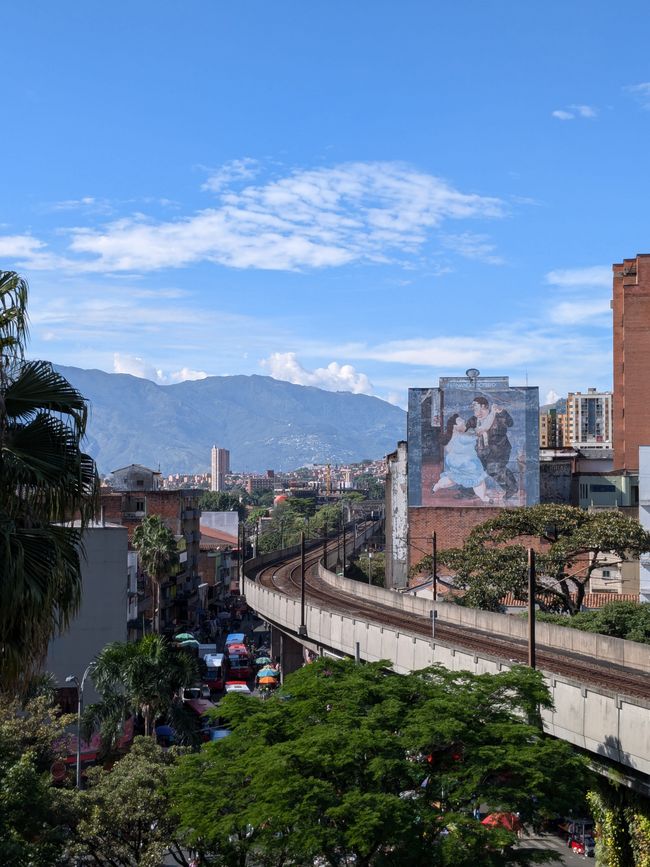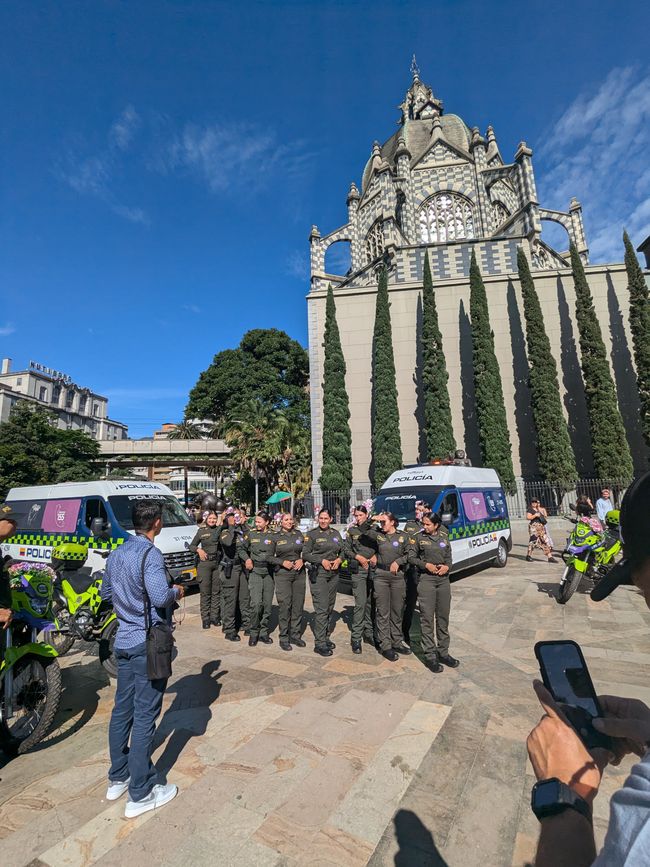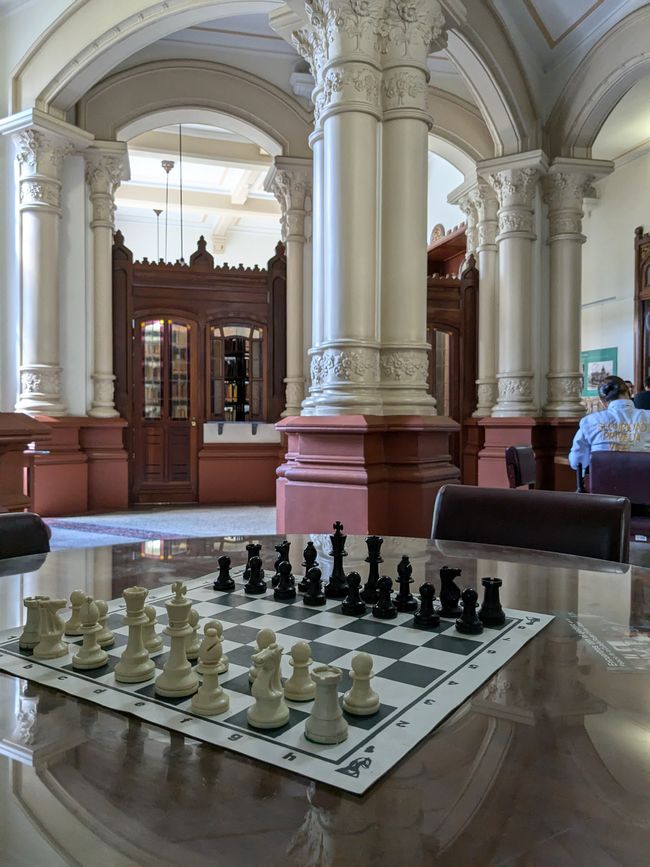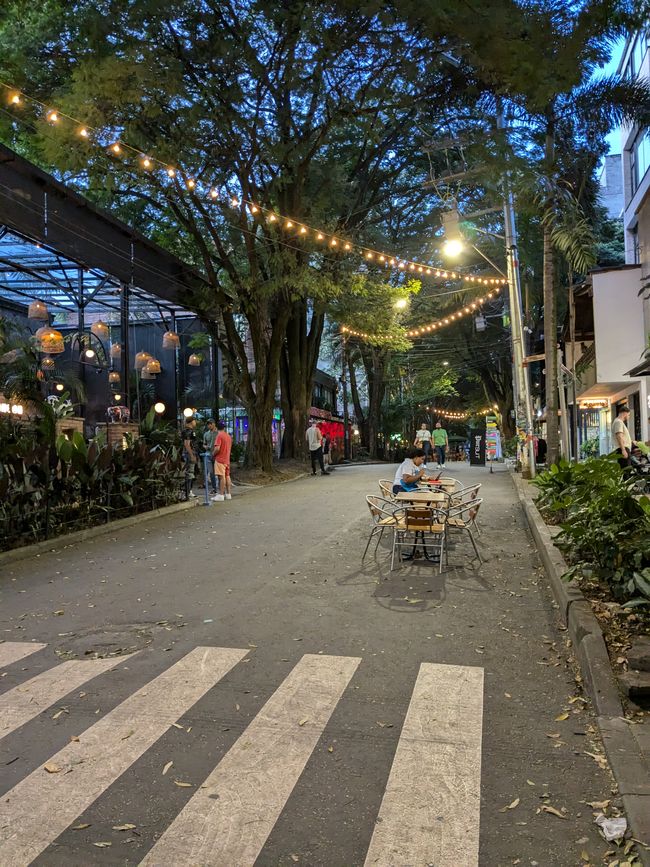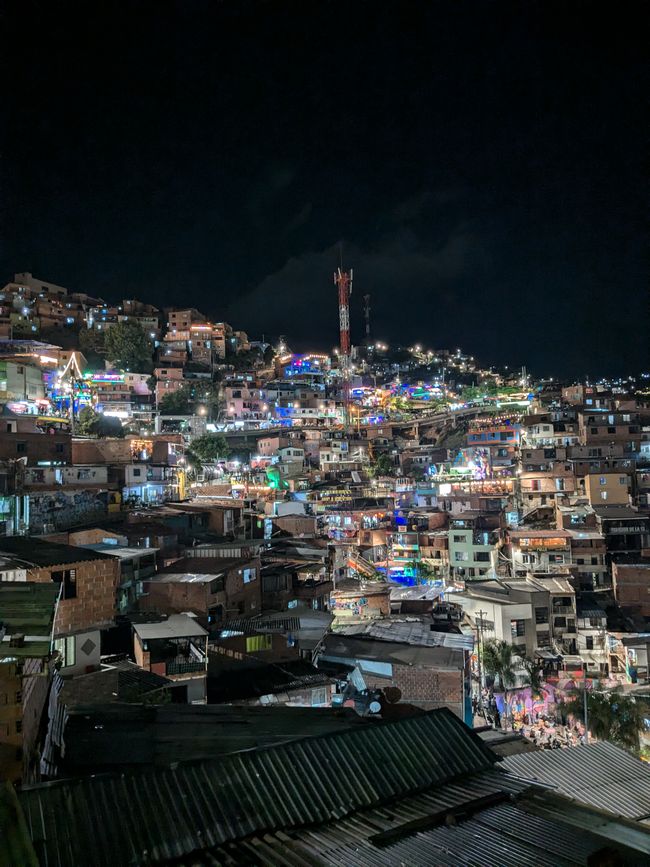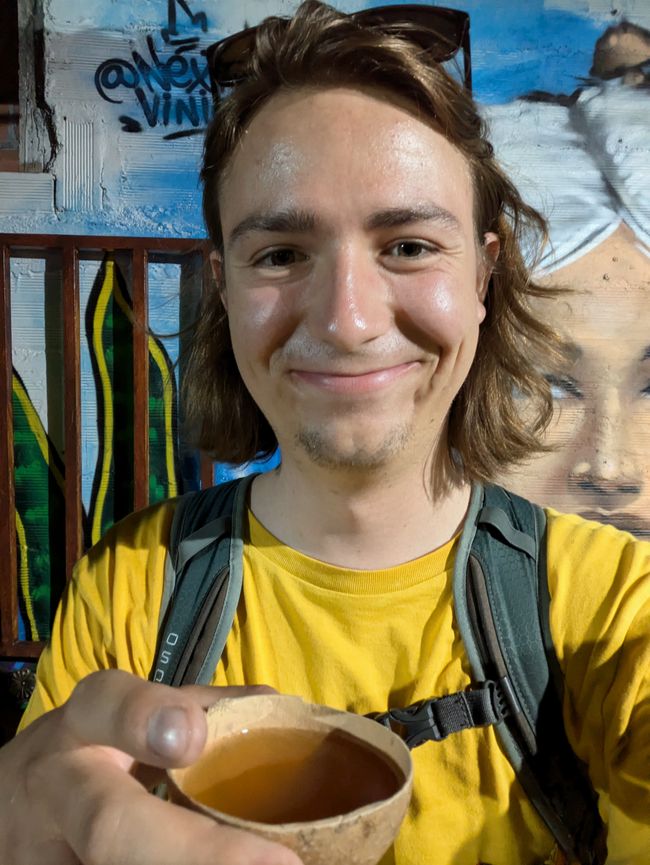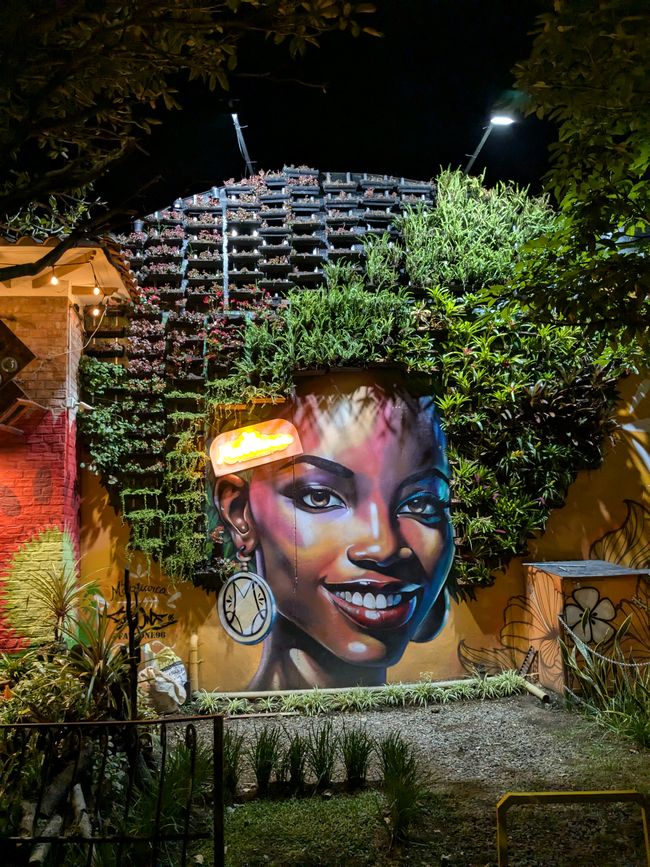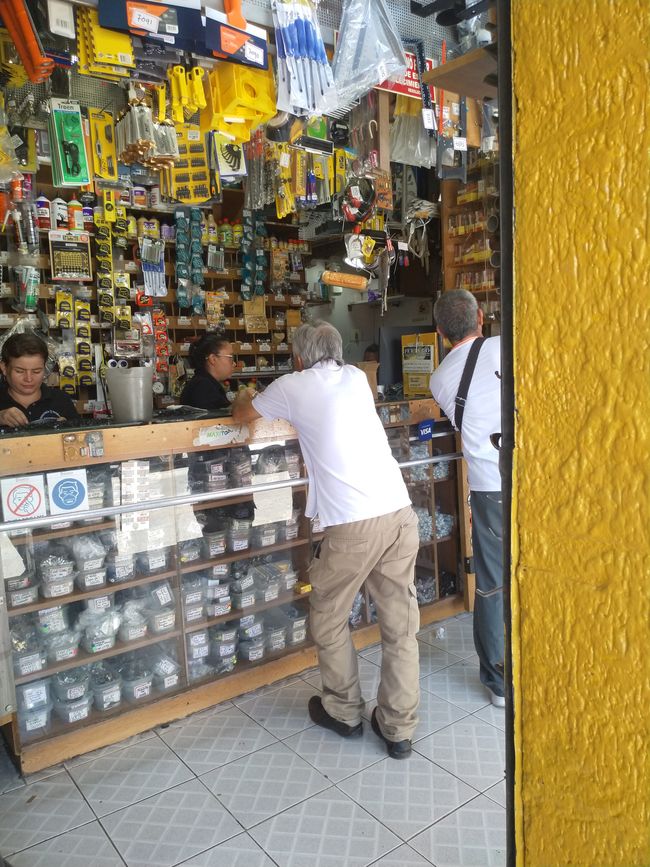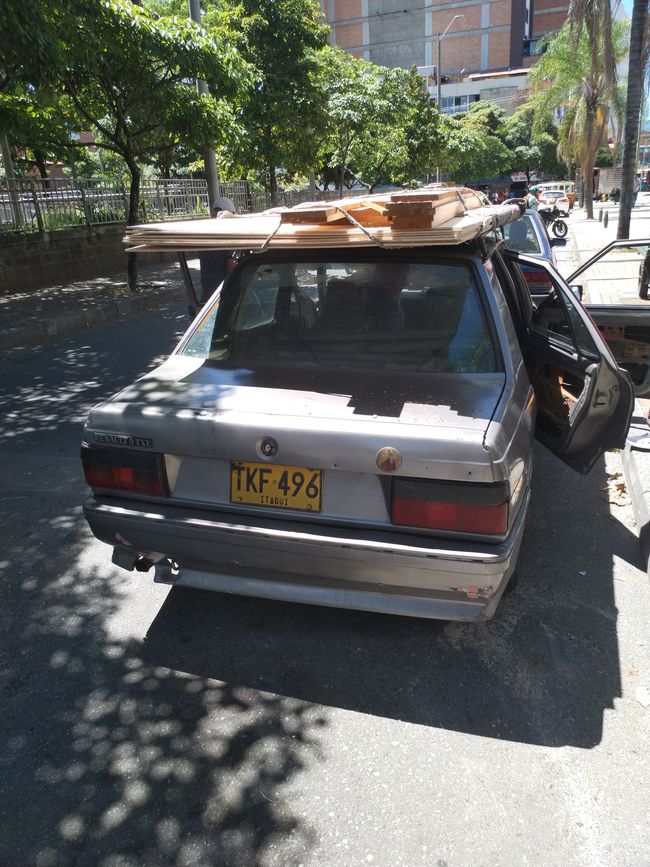Medellín
Buga: 19.08.2024
Biyan kuɗi zuwa Newsletter
Even before my trip, I was aware that Medellín could possibly be the most interesting point of my journey through Colombia. The country’s second-largest city is located in a river valley at about 1,400 m above sea level. This pleasant climate grants it the nickname 'the city of eternal spring.' However, it is no secret that times weren't always bright. The presence of guerrillas, the army, and the Medellín cartel made Medellín the most dangerous city in the world during the 1980s and 1990s.
I had the chance to explore Medellín on the second day of my journey. Sebas' uncle is a carpenter and is supposed to build a humidor cabinet for the store. To buy the necessary wood, hardware, and screws, we head to the city center, where within two to three blocks, everything a craftsman’s heart yearns for can be found. We have the wood cut at two small workshops using ancient circular saws, while the black cat Onyx entertains us. We transport our purchases in a very rickety Renault to the family’s house, where the grandmother has already served meat in broth with fried bananas. I try a tree tomato, which I definitely prefer as juice.
With our hunger satisfied, Sebas shows me around the neighborhood a bit more before we take a gondola of the MetroCable, which connects the 'invasive' neighborhoods on the steep slopes with the core city. This infrastructure, already replicated in other cities, is one of many measures that have transformed Medellín from a city with significant social inequality to one that is livable for everyone. The latest development of this kind is the enclosure of the city highway, creating a beautiful park along the riverbanks. We end the day there with a beer before enjoying a spectacular view of the valley lights on our way back.
The next two excursions mainly take me to the chic residential and nightlife district of El Poblado. Once, I take a free tour with Beate, a woman from Rhineland I sat next to on the plane. The guide shows us very beautiful spots, but also does not ignore the legacy of the narco-culture and the increasing sex tourism. The second time, I visit the botanical garden with Sebas, which provides a tour through the various biomes of Colombia. In the evening, we meet in Poblado with Nadine, with whom I was on an excursion in Lapland exactly two years ago, for some tacos. She is currently doing a semester abroad in Medellín and is still adjusting to her university workload. After that, we attend a bachata class together, which takes place in a bar beneath a street bridge. Even though it’s a beginner’s class, we gringos quickly become overwhelmed by the step sequences, but we still have a lot of fun.
Next, I spend an entire day alone in the city, visiting the Casa de la Memoria, which manages to impressively showcase the backgrounds and consequences of Colombia's violent conflicts. In contrast, the Art Nouveau architecture of the Palacio de la Cultura reflects the bourgeois pride of early 20th-century Medellín. In Comuna 13, a contrasting experience awaits me again. Once controlled by various guerrilla groups, this invasive settlement is now a tourist magnet with numerous bars and souvenir shops. The walls along the former execution site are covered in graffiti, in front of which breakdancers and freestyle rappers display their skills for a donation.
EN
Even before my trip, I knew that Medellín might be the most interesting part of my journey through Colombia. The country's second-largest city lies in a river valley at around 1,400 meters above sea level. This very pleasant climate gives it the nickname 'The City of Eternal Spring'. However, it is no secret that times were not always rosy. The presence of guerrillas, the army, and the Medellín cartel ensured that Medellín was considered the most dangerous city in the world in the 1980s and 1990s.
I had the chance to explore Medellín on the second day of my trip. Sebas' uncle is a carpenter and is supposed to build a humidor cabinet for the store. To buy the necessary wood, fittings, and screws, we head to the city center, where within two to three blocks, you can find everything a craftsman's heart desires. We have the wood cut in two small workshops on ancient circular saws while the black cat Onyx entertains us. We transport our purchases in a very rickety Renault to the family's house, where the grandmother has already served us meat in broth with fried bananas. I try a tree tomato, which I definitely prefer as juice.
Strengthened by the meal, Sebas shows me around the neighborhood a bit before we take a gondola of the MetroCable, which connects the 'invasive' neighborhoods on the steep slopes with the city center. Already copied in other cities, this infrastructure is one of many measures that have transformed Medellín from a socially very unequal city into one that is livable for everyone. The latest development of this type is the enclosure of the city highway, creating a very beautiful park along the riverbanks. We end the day there with a beer before enjoying a spectacular view of the valley lights on our way back.
The next two excursions mainly take me to the chic residential and nightlife district of El Poblado. Once, I take a free tour with Beate, a woman from Rhineland I sat next to on the plane. The guide shows us very beautiful spots but also does not skip the legacy of the narco-culture and the increasing sex tourism. The second time, I visit the botanical garden with Sebas, which is like a tour through the various biomes of Colombia. In the evening, we meet in Poblado with Nadine, with whom I was on an excursion in Lapland exactly two years ago, to eat tacos. She is currently doing a semester abroad in Medellín and is still adjusting to her university's workload. We then attend a bachata class together, which takes place in a bar under a street bridge. Even though it's a beginner's course, we gringos quickly get overwhelmed by the steps, but we still have a lot of fun.
I then spend a whole day alone in the city, visiting the Casa de la Memoria, which manages to impressively showcase the backgrounds and consequences of Colombia's violent conflicts. In contrast, the Art Nouveau architecture of the Palacio de la Cultura testifies to the bourgeois pride of early 20th-century Medellín. In Comuna 13, another contrasting experience awaits me. Once controlled by various guerrilla groups, the invasive settlement is now a tourist magnet with numerous bars and souvenir shops. The walls along the former execution site are full of graffiti, in front of which breakdancers and freestyle rappers show their skills for a donation.
ES
Incluso antes de mi viaje, sabía que Medellín podría ser el punto más interesante de mi recorrido por Colombia. La segunda ciudad más grande del país se encuentra en un valle fluvial a unos 1.400 metros sobre el nivel del mar. Este clima tan agradable le da el apodo de 'La Ciudad de la Eterna Primavera'. Sin embargo, no es ningún secreto que los tiempos no siempre fueron buenos. La presencia de guerrillas, el ejército y el cartel de Medellín aseguraron que Medellín fuera considerada la ciudad más peligrosa del mundo en los años 80 y 90.
Tuve la oportunidad de explorar Medellín en el segundo día de mi viaje. El tío de Sebas es carpintero y se supone que debe construir un armario humidor para la tienda. Para comprar la madera, los accesorios y los tornillos necesarios, nos dirigimos al centro de la ciudad, donde en dos o tres cuadras se puede encontrar todo lo que desea el corazón de un artesano. Mandamos cortar la madera en dos pequeños talleres con sierras circulares antiguas mientras el gato negro Onyx nos entretiene. Transportamos nuestras compras en un Renault muy destartalado hasta la casa de la familia, donde la abuela ya nos ha servido carne en caldo con plátanos fritos. Pruebo un tomate de árbol, que prefiero como jugo.
Fortalecidos por la comida, Sebas me muestra un poco el barrio antes de que tomemos una góndola del MetroCable, que conecta los barrios 'invasores' en las laderas empinadas con el centro de la ciudad. Ya copiada en otras ciudades, esta infraestructura es una de las muchas medidas que han transformado a Medellín de una ciudad socialmente muy desigual a una habitable para todos. El último desarrollo de este tipo es el cerramiento de la autopista de la ciudad, creando un parque muy hermoso a lo largo de las orillas del río. Terminamos el día allí con una cerveza antes de disfrutar de una vista espectacular de las luces del valle en nuestro camino de regreso.
Las siguientes dos excursiones me llevan principalmente al elegante distrito residencial y de vida nocturna de El Poblado. Una vez, hago un recorrido gratuito con Beate, una mujer de Renania con la que me senté en el avión. El guía nos muestra lugares muy hermosos pero tampoco omite el legado de la cultura narco y el creciente turismo sexual. La segunda vez, visito el jardín botánico con Sebas, que es como un recorrido por los diversos biomas de Colombia. Por la noche, nos encontramos en Poblado con Nadine, con quien estuve en una excursión en Laponia exactamente hace dos años, para comer tacos. Actualmente está haciendo un semestre en el extranjero en Medellín y todavía se está adaptando a la carga de trabajo de su universidad. Luego asistimos juntos a una clase de bachata, que tiene lugar en un bar bajo un puente de la calle. Aunque es un curso para principiantes, nosotros, los gringos, rápidamente nos abrumamos con los pasos, pero aún así nos divertimos mucho.
Luego paso un día entero solo en la ciudad, visitando la Casa de la Memoria, que logra mostrar de manera impresionante los antecedentes y las consecuencias de los conflictos violentos de Colombia. En contraste, la arquitectura modernista del Palacio de la Cultura da testimonio del orgullo burgués del Medellín de principios del siglo XX. En la Comuna 13, me espera otra experiencia contrastante. Una vez controlada por varios grupos guerrilleros, el asentamiento invasor es ahora un imán para turistas con numerosos bares y tiendas de souvenirs. Las paredes a lo largo del antiguo lugar de ejecución están llenas de grafitis, frente a los cuales los bailarines de breakdance y los raperos de estilo libre muestran sus habilidades a cambio de una donación.
Biyan kuɗi zuwa Newsletter
Amsa
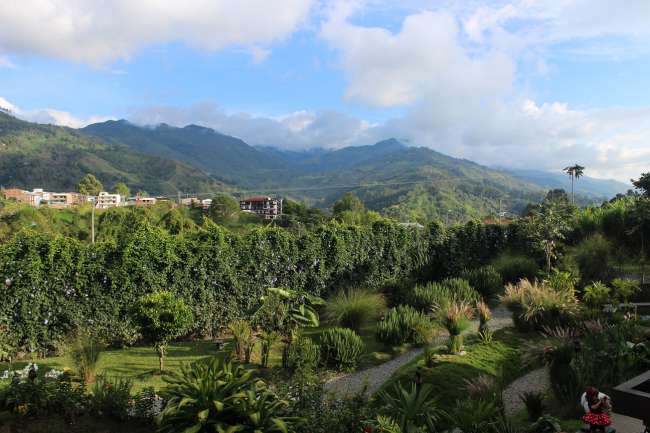
Rahoton balaguro Colombia


